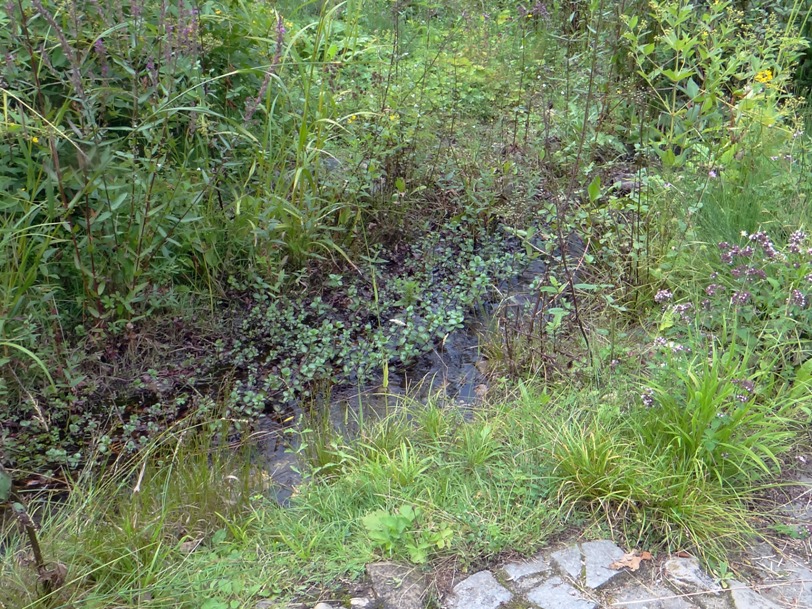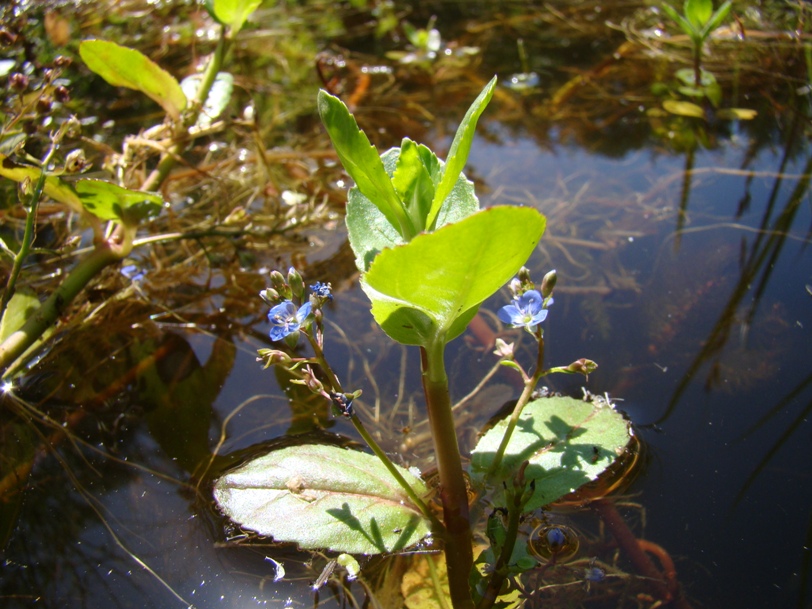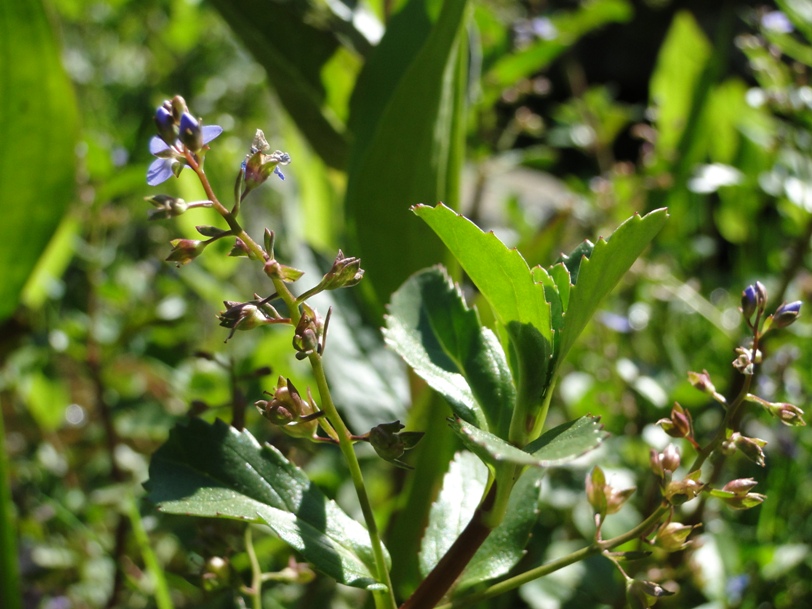Brooklime
Veronica beccabunga
Plantain family (Plantaginaceae)
A sky blue carpet
With its small, bright blue flowers this is an attractive little speedwell. Sometimes however it looks just like smooth, round stalks partially lying in running water such as streams or springs. Sometimes only the flowers appear above the water surface. The plant retains its leaves through the winter. Brooklime is not sensitive to water pollution and contains a type of antifreeze as an adaptation to the cold.
In the past brooklime was eaten, like watercress, to help prevent scurvy as the tart-tasting leaves are high in vitamin C. Don’t eat too much though because the leaves and young shoots contain diuretic substances.
Themes
Crown jewel in the Nijmegen Botanic Garden.
Seeds are dispersed on the feet of waterfowl.
Diuretic in excessive consumption. The convexity of the fruit was taken as a sign that it could help with bloating.
Was formerly eaten to prevent scurvy - the pungent leaves are rich in vitamin C.
Veronica beccabunga is renown for its need for large quantites of nitrate, and the plant is special because it contains antifreeze substances enabling it to stay green throughout the winter.
The species name 'beccabunga' reflects the convex shape of the seeds. 'Bunga' is derived from the German 'Bunge' and means kettledrum
Details
| Description: | Herb, 15-60 cm. |
|---|---|
| Distributions: | Europe, north africa and northern and western asia. |
| Habitat: | Along the edge of water (also in water), seepage areas, quarries, old river courses, coastal dunes, grassland, wasteland, wet soil and in forests. |
| Year cycle: | Perennial (trees and shrubs included) |
| Hardiness: | Colder than -4 f (very hardy) |
| Flowering period: | Mei - september |
| Flower color: | Blue, pink |
| Notes on flowers: | Flowers 5-8 mm, borne in opposing, long-stemmed clusters in the leaf axils of the upper leaves and have a sky blue (rarely pink) corolla. |
| Fruiting period: | Juli - september |
| At its best: | Mei - september |



